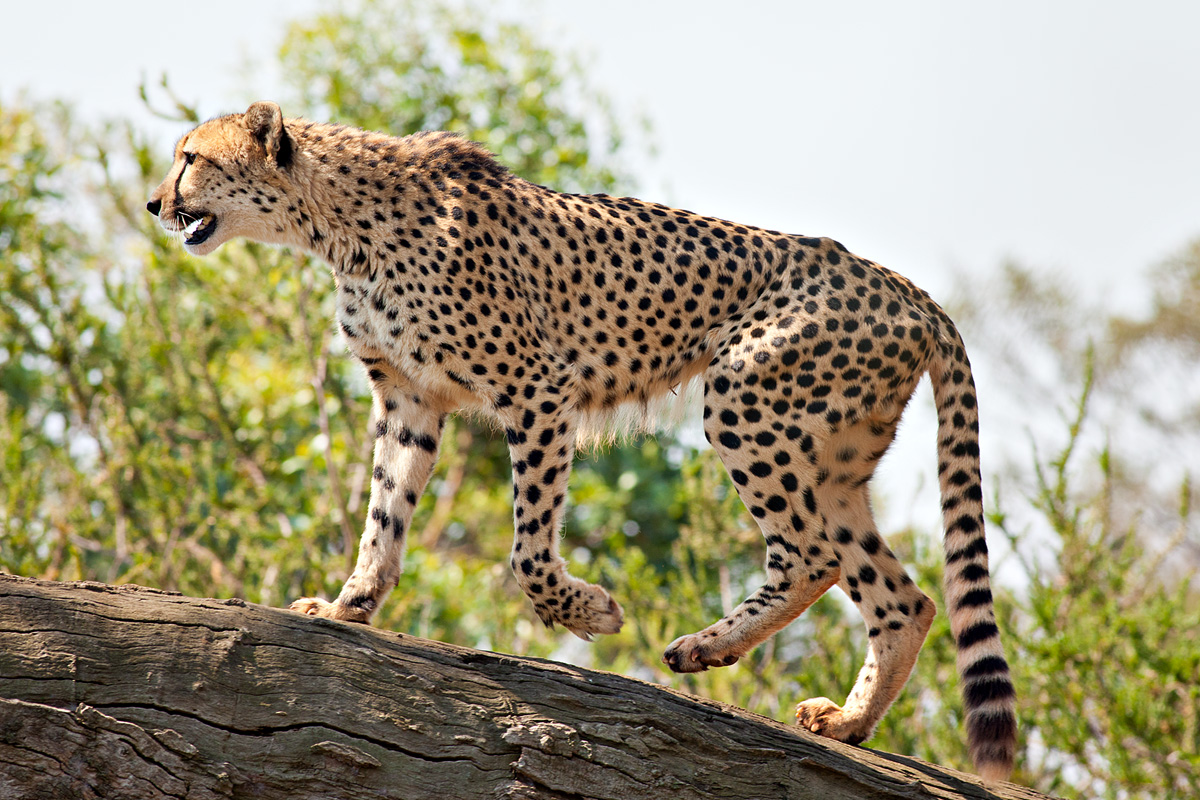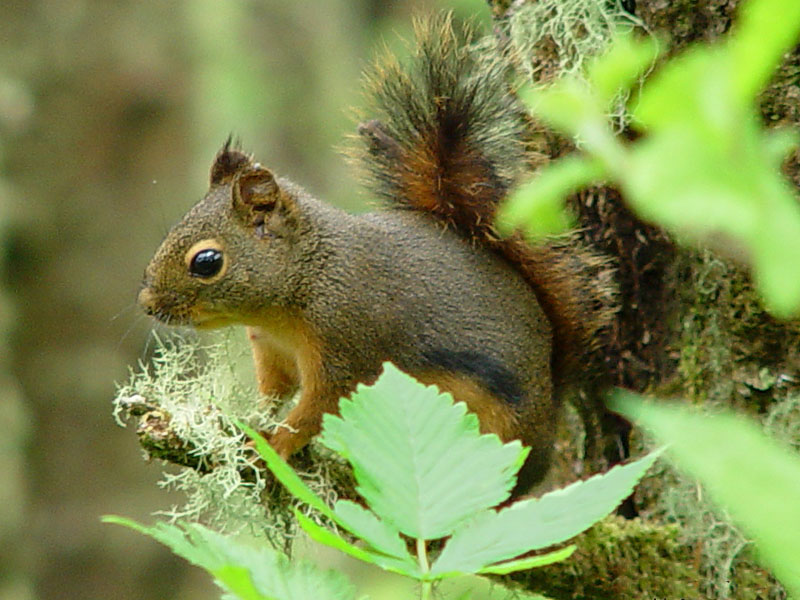Wild Animals Biography
Source Link Goggle.com.pkThe wildlife in India comprises a mix of species of different types of organisms.[1] Apart from a handful of the major farm animals such as cows, buffaloes, goats, poultry, pigs & sheep, India has an amazingly wide variety of animals native to the country. It is home to Bengal tigers, Deer Pythons, Wolves, Foxes, Bears, Crocodiles, Camels, Wild dogs, Monkeys, Snakes, Antelope species, varieties of bison and not to mention the mighty Asian elephant. The region's rich and diverse wildlife is preserved in 89 national parks, 18 Bio reserves and 400+ wildlife sanctuaries across the country.India has some of the most biodiverse regions of the world and hosts three of the world’s 34 biodiversity hotspots – or treasure-houses – that is the Western Ghats, the Eastern Himalayas and Indo- Burma.[2] Since India is home to a number of rare and threatened animal species, wildlife management in the country is essential to preserve these species.[3] According to one study, India along with 17 mega diverse countries is home to about 60-70 % of the world's biodiversity.[4]
India, lying within the Indomalaya ecozone, is home to about 7.6% of all mammalian, 12.6% of avian, 6.2% of reptilian, and 6.0% of flowering plant species.[5] Many ecoregions, such as the shola forests, also exhibit extremely high rates of endemism; overall, 33% of Indian plant species are endemic.[6][7] India's forest cover ranges from the tropical rainforest of the Andaman Islands, Western Ghats, and Northeast India to the coniferous forest of the Himalaya. Between these extremes lie the sal-dominated moist deciduous forest of eastern India; teak-dominated dry deciduous forest of central and southern India; and the babul-dominated thorn forest of the central Deccan and western Gangetic plain.[8] Important Indian trees include the medicinal neem, widely used in rural Indian herbal remedies. The pipal fig tree, shown on the seals of Mohenjo-daro, shaded the Gautama Buddha as he sought enlightenment.
Many Indian species are descendants of taxa originating in Gondwana, to which India originally belonged. Peninsular India's subsequent movement towards, and collision with, the Laurasian landmass set off a mass exchange of species. However, volcanism and climatic change 20 million years ago caused the extinction of many endemic Indian forms.[9] Soon thereafter, mammals entered India from Asia through two zoogeographical passes on either side of the emerging Himalaya.[8] As a result, among Indian species, only 12.6% of mammals and 4.5% of birds are endemic, contrasting with 45.8% of reptiles and 55.8% of amphibians.[5] Notable endemics are the Nilgiri leaf monkey and the brown and carmine Beddome's toad of the Western Ghats. India contains 172, or 2.9%, of IUCN-designated threatened species.[10] These include the Asiatic lion, the Bengal tiger, and the Indian white-rumped vulture, which suffered a near-extinction from ingesting the carrion of diclofenac-treated cattle.
In recent decades, human encroachment has posed a threat to India's wildlife; in response, the system of national parks and protected areas, first established in 1935, was substantially expanded. In 1972, India enacted the Wildlife Protection Act and Project Tiger to safeguard crucial habitat; further federal protections were promulgated in the 1980s. Along with over 515 wildlife sanctuaries, India now hosts 18 biosphere reserves, 9 of which are part of the World Network of Biosphere Reserves; 26 wetlands are registered under the Ramsar .
The varied and rich wildlife of India has had a profound impact on the region's popular culture. The common name for wilderness in India is Jungle, which was adopted into the English language. The word has been also made famous in The Jungle Book by Rudyard Kipling. India's wildlife has been the subject of numerous other tales and fables such as the Panchatantra
.The need for conservation of wildlife in India is often questioned because of the apparently incorrect priority in the face of direct poverty of the people. However, Article 48 of the Constitution of India specifies that, "The state shall yendeavour to protect and improve the environment and to safeguard the forests and wildlife of the country" and Article 51-A states that "it shall be the duty of every citizen of India to protect and improve the natural environment including forests, lakes, rivers, and wildlife and to have compassion for living creatures."[11]
Large and charismatic mammals are important for wildlife tourism in India, and several national parks and wildlife sanctuaries cater to these needs. Project Tiger, started in 1972, is a major effort to conserve the tiger and its habitats.[12] At the turn of the 20th century, one estimate of the tiger population in India placed the figure at 40,000, yet an Indian tiger census conducted in 2008 revealed the existence of only 1,411 tigers. 2010 Tiger census revealed that there are 1700 tigers left in India.[13] The passing of the Forest Rights Act by the Indian government in 2008 has been the final nail in the coffin and has pushed the Indian tiger to the verge of extinction. Various pressures in the later part of the 20th century led to the progressive decline of wilderness resulting in the disturbance of viable tiger habitats. At the International Union for the Conservation of Nature and Natural Resources (IUCN) General Assembly meeting in Delhi in 1969, serious concern was voiced about the threat to several species of wildlife and the shrinkage of wilderness in India. In 1970, a national ban on tiger hunting was imposed, and in 1972 the Wildlife Protection Act came into force. The framework was then set up to formulate a project for tiger conservation with an ecological approach. However, there is not much optimism about this framework's ability to save the peacock, which is the national bird of India. George Schaller wrote
Wild Animals Animals Photos Images Mating With Down Syndrome With Names To Draw In The Rainforest Wallpapers With Human Teeth
Wild Animals Animals Photos Images Mating With Down Syndrome With Names To Draw In The Rainforest Wallpapers With Human Teeth
Wild Animals Animals Photos Images Mating With Down Syndrome With Names To Draw In The Rainforest Wallpapers With Human Teeth
Wild Animals Animals Photos Images Mating With Down Syndrome With Names To Draw In The Rainforest Wallpapers With Human Teeth
Wild Animals Animals Photos Images Mating With Down Syndrome With Names To Draw In The Rainforest Wallpapers With Human Teeth
Wild Animals Animals Photos Images Mating With Down Syndrome With Names To Draw In The Rainforest Wallpapers With Human Teeth
Wild Animals Animals Photos Images Mating With Down Syndrome With Names To Draw In The Rainforest Wallpapers With Human Teeth
Wild Animals Animals Photos Images Mating With Down Syndrome With Names To Draw In The Rainforest Wallpapers With Human Teeth
Wild Animals Animals Photos Images Mating With Down Syndrome With Names To Draw In The Rainforest Wallpapers With Human Teeth
Wild Animals Animals Photos Images Mating With Down Syndrome With Names To Draw In The Rainforest Wallpapers With Human Teeth
Wild Animals Animals Photos Images Mating With Down Syndrome With Names To Draw In The Rainforest Wallpapers With Human Teeth








No comments:
Post a Comment